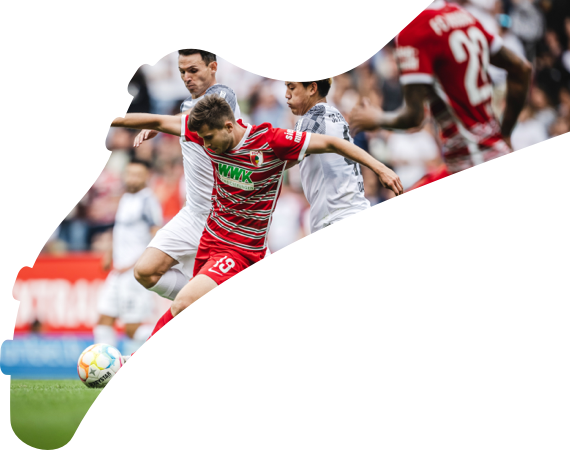
Where will Emre Can play for Borussia Dortmund?
The arrival of Emre Can at the Signal Iduna Park on loan from Juventus provides Borussia Dortmund boss Lucien Favre much greater flexibility with his team thanks to the Germany international’s versatility across the pitch, but how exactly?
bundesliga.com looks at where 26-year-old Can can fit into Dortmund’s system, as well as where he’s previously been most effective.
Option 1: In a back three
Dortmund made the switch to a three-man defence at the end of November as they beat Hertha Berlin 2-1 following a 4-0 loss at Bayern Munich and an equally chastening 3-3 draw at home to Paderborn after going 3-0 down at half-time.
In the games since then, Favre’s preferred backline has consisted of Manuel Akanji, Mats Hummels and Dan-Axel Zagadou. In the absence of one of those, Lukasz Piszczek has come in.
The Poland international has been used in central defensive roles before down the years, and it’s perhaps a position more suited to the right-back now he’s 34, but Can provides much greater mobility required of a centre-back in a three-man defence. The new signing’s passing statistics have also generally been greater than Piszczek’s, who has a career average of 79 per cent compared to Can’s 83.
Watch: Emre Can is back in the league that made him

On top of that, Can has more familiarity with the position than Piszczek. In fact, he’s more accustomed to a back three than any of Akanji, Hummels and Zagadou. It’s where Joachim Löw has most utilised him in recent times, and where he got most of his playing time at Liverpool under Brendan Rodgers.
Although signed for his versatility, it makes sense to bring in a player that fits in the system used by the coach, rather than adapt the system to a player. The preferred back three all average at least 90 per cent for pass completion in the league this season, highlighting BVB’s desire to play out from the back, with Hummels playing the role of a quarterback.
The midfield is currently well balanced with enforcer Axel Witsel and the creative Julian Brandt, who has proven a good fit since his summer arrival from Bayer Leverkusen. Favre is unlikely to want to break that potent partnership up, meaning a role in a back three looks likely for Can.
Option 2: In central midfield
Can has returned to the Bundesliga in search of more playing time, so will be expecting that. It will therefore be interesting to see whether his introduction sees Favre opt for a return to his previous formation of choice.
Should he do that, the preference would likely be for two out-and-out centre-backs, meaning the Eintracht Frankfurt youth product could shift into his preferred central midfield role, although he has also played in the middle of a back four for club and country.
Whether in a midfield two or three, Can’s primary position at Leverkusen, at Liverpool under Jürgen Klopp, Juventus and previously with Germany was in the centre of the pitch. The double-edged sword of his versatility simply meant he would often be moved elsewhere when required.
It may seem harsh on Brandt to lose his place in midfield after the impressive season he’s had, but the physicality Witsel brings to the role at BVB is unique. Thomas Delaney fulfils a similar role but does not have the same presence as the Belgian and has been out injured for some time.
A defensive midfielder by trade and not afraid of getting stuck in, Can would provide added protection in front of the back like. However, he is also confident and skilled enough on the ball to take it forward, using a good turn of pace to get past defenders. It’s that all-round game in the centre of the pitch that has seen him compared with Germany predecessors Michael Ballack and Bastian Schweinsteiger.
That ability to both sit back and break up play as well as burst forward takes the pressure off Witsel, allowing one to take on one role and then alternate as needed during a game.
It should also be noted that Can’s arrival is perhaps opportune given the fact that Marco Reus has been ruled out for some weeks. That could allow the new man to indeed play in midfield and keep Brandt in the side, simply further forward behind striker Erling Haaland and in a trio with Jadon Sancho and Thorgan Hazard.
The same principle applies if Favre does stick with the three-man defence. Reus’ absence means Brandt shifts further up the pitch and Can takes up his role alongside Witsel.
Option 3: At full-back
Perhaps a less likely scenario but nevertheless plausible is that Can is used as a full-back, either on the left or right. They’re both positions he’s played before, going all the way back to his senior debut for Bayern Munich in 2012.
He played the opening two games of the treble-winning season under Jupp Heynckes at left-back, before making his final appearance for the club, against Dortmund, as a substitute at right-back on Matchday 32.
Can would also play at left-back for Leverkusen on numerous occasions, as well as on the right of a back four for Liverpool and Germany.
It’s therefore not improbable for him to be utilised in either position by Favre, but the club is relatively well equipped in the full-back positions with Piszczek and Achraf Hakimi both capable of playing on either side, as well as Raphael Guerreiro, Nico Schulz or even Zagadou providing options on the left.
Of course, injuries and suspensions could change that. Hakimi and Guerreiro have also been used on a number of occasions in more attacking winger roles. Can could therefore provide cover in behind.
Both Can and sporting director Michael Zorc described the loan deal, which comes with the option to make the move permanent, as an ideal fit for both parties. That Can can fit in more than one position, with quite some aplomb, makes the deal that much sweeter.
Related news

Matchday 32 probable teams
What knocks and niggles does Thomas Tuchel have to manage as Bayern Munich visit Stuttgart between their two Real Madrid fixtures?

Who are Holstein Kiel?
Holstein Kiel are closing in on reaching the Bundesliga for the very first time. bundesliga.com profiles the northern German club who have come so close to promotion in recent seasons.

Worlds apart in Germany’s second city derby
They may be city neighbours, but HSV and St. Pauli are worlds apart in how they view the game.


